Bloom Hits the Right Notes for Spring
If forced to choose among my favorite high-concept pieces I’ve reviewed over the years, I’d have to go with Aranda/Lasch’s Quasi Console, Bram Geenen’s Gaudà Stool, the Bouroullec’s Vegetal Chair, and–the latest entry–Kenneth Cobonpue’s Bloom. Each of these ambitious projects takes a notion that may seem foreign to product design (how does a tree grow? what if we used a quasi-crystalline structure called a “rhomb” as a template for new materials?) and employs it to create a singular piece.
Bloom. Designed by Kenneth Conbonpue.
The notion reminds me of a school of fiction writing called “Oulipo,” in which practitioners apply an artificial constraint–like, say, writing a novel without using the letter “e”–in the hope of creating something without precedent. In the case of Cobonpue, the exceptional result of his attempt to duplicate the extraordinary visage of a subtly billowing flower is appropriately called Bloom. However, I can’t help but speculate that the meaning of the name is a bit more complicated than it might seem, since, for me, the luxuriant armchair references the peak of vitality as well as the pathos of physiological demise.
If you’ve ever seen the tail end of an oriental poppy’s yearly ritual you know whereof I speak. As they bloom, the flowers reach a tactile crescendo of ineffability, as the beautiful petals metamorphose from fluttery, soft, and strong into a gossamer filament that most resembles crepe paper, and is oh-so-easily taken by the wind. Cobonpue’s Bloom captures the essence of this transformation, freezing the confounding moment when the bloom of a flower is at its height and thus primed for its inevitable fall. If that’s not enough to transfix you, there’s also the near-miracle of the piece’s execution: how did he make something so ostensibly soft still suitable for load-bearing activity? As it turns out, he’s left much to our imagination, offering only that it’s “made of microfiber stitched over a resin top with a steel base” and “sculpted by hundreds of fine running stitches radiating from the center of the seat.”
Of course, in the end the “how” is subservient to the “why.” And though I certainly feel secure leaving the answer to the latter at the proverbial “why not?” I’d also respond, “because it looks like the softest, most symmetrical, plushest, and lushest over-sized vegetation I’ve ever seen.” Sort of like a floral re-patriation from Land of the Lost. And who wouldn’t want to lounge around in that?
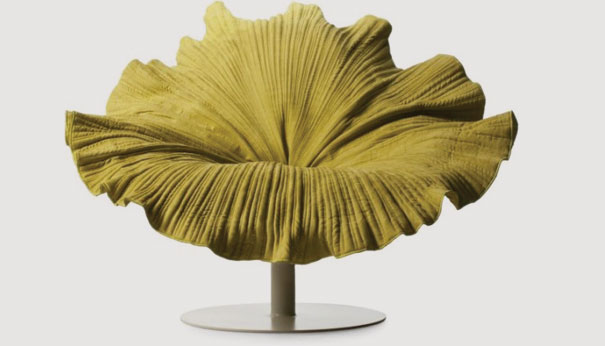
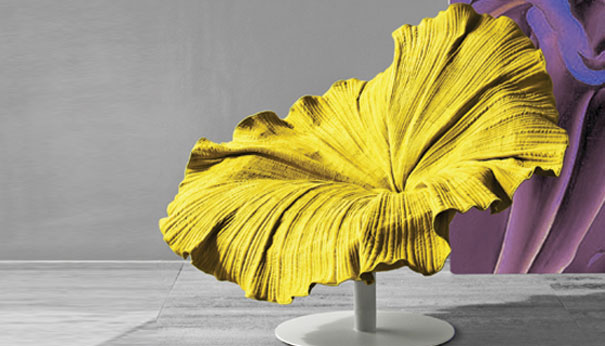
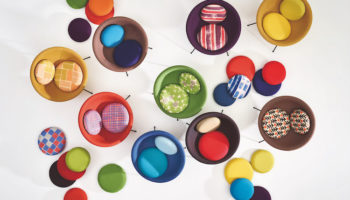
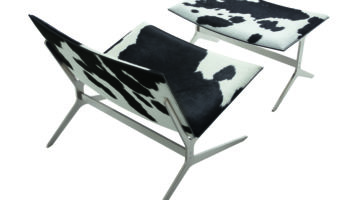
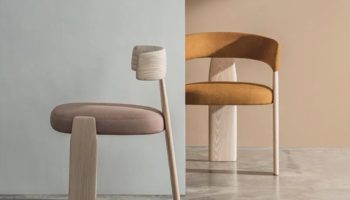
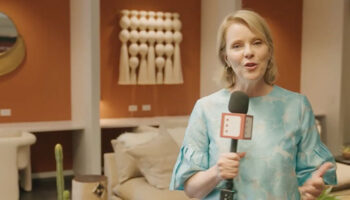
Leave a Reply